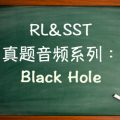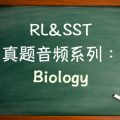【墨尔本PTE】PTE听力和口语一直是PTE口语考试中最重要的部分,今天墨尔本文波PTE培训学校给大家总结下PTE中的RL真题:
sensing system
Computer scientist Shweta Patel and his team are developing new sensing systems. “The initial focus was really around energy and water monitoring.” They built a new generation of smart sensors that monitor electronic interference on a home’s power line or water pressure changes in the plumbing. Most of this technology has already found industrial applications, and Patel and his team turned their attention to adapting this technology for personal health monitoring. “So how do we take this noise and make it into a signal of interest was kind of in the core of what we did for many years and we’re taking that work and applying it to other domains.” They’re looking to take advantage of all the functionality built in our smartphones. With the users’ permission, this app can use the microphone built into most smartphones to listen to background noises, such as coughing, searching for patterns that suggest a trip to the doctor might be an order. “We constructed these models that try and understand how sound works, how it, what its patterns are and we give it a whole bunch of examples of different kinds of audio things, like people talking, things like people laughing, sneezing and of course coughing. This app uses a phone’s camera to check haemoglobin (血红蛋白) levels in blood by analyzing the color of capillary(毛细血管的) fluids through the skin. Generally, what happens is if you’re anemic(贫血的), your bloods are going to be a little less red and we take advantage of that by putting your finger over a camera of a phone. The camera of the phone can actually see the coloration(着色) of the blood. This test uses the camera to tell parents worried about jaundice in newborn infants. “Now jaundice(黄疸) is something that doctors who have seen tons of babies can just kind of figure out on a very basic level of is this baby, do they need to get treatment or are they in a good condition, whereas the first-time parent has no idea necessarily what jaundice might look like.” The researchers say the built-in sensors found in smartphones are already commonplace, but their applications and their implications for our health and well-being may be more far-reaching than we ever imagined.





